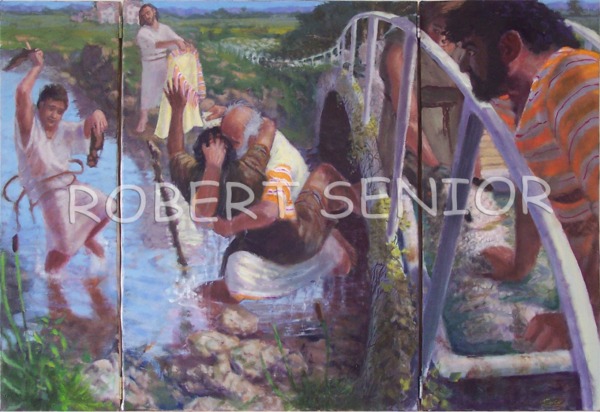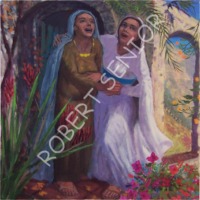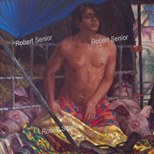New Testament
The Prodigal Son
Oil on canvas. 60 x 90cm approximately.
For the younger son to demand his inheritance, was to say to the Father not only was he wished dead by the son but that he was considered dead, by him. However when he is starving in a pigsty and unable to fend for himself; having lost friends and used up all his resources, he is forced to see himself as he truly is: utterly helpless. In this moment of clarity and not withstanding his brutal rejection of the father, the younger son has sufficient understanding of his father's love, to still expert the father to take him back, albeit as a servant.
In the central panel of the painting, I have depicted the father impelled by love, simultaneously bowling the boy over and protecting him from harm with his loving embrace. The Prodigal son, caught off balance, is unable to do anything but cling to the Father, to save himself from falling. His helplessness allows him to experience the strength of his fathers love for him. It allows the father to show him that his love is not given because it is deserved or earned but simply because it is freely given.
The eldest son's words to his father suggest that this is a lesson he still has to learn. “I have slaved for you all these years...”. Although outwardly faithful, interiorly he appears to have lived his life like a servant or slave, doing his duty out of compulsion and with resentment. Furthermore seeing himself as a servant, he sees his father not as a loving father, but as a demanding master. The eldest son is trying to earn his father's love not realising that he already possesses it. As the father puts it, “all I have is yours”.
As regards the picture, I have portrayed the eldest son, glowering at the embracing father and son, as he furiously dips sheep on the bridge. He is dressed in an orange striped tunic, like the father's and the one held aloft for the younger son, but wears it in the same way as the servants, bound about his torso by two cords.
By this, I have tried to show that he sees himself as a servant; that he wears his son-ship like servitude.
In direct contrast to the eldest son, in the far left of the painting, a servant splashes joyfully down the river towards his master, bearing the sandals he has been ordered to bring.
This joy at seeing the son's return and his master's happiness, must in essence be love for them. In fact he shows more love for the father than either of the sons. Even the younger son, makes no mention of love for the father, but acts merely out of self interest. So in a sense, this love allows the servant to live life more as a son than a servant. Love allows him to serve freely, as a son. The two cords of his servitude come loose as he bounds excitedly down the river.



